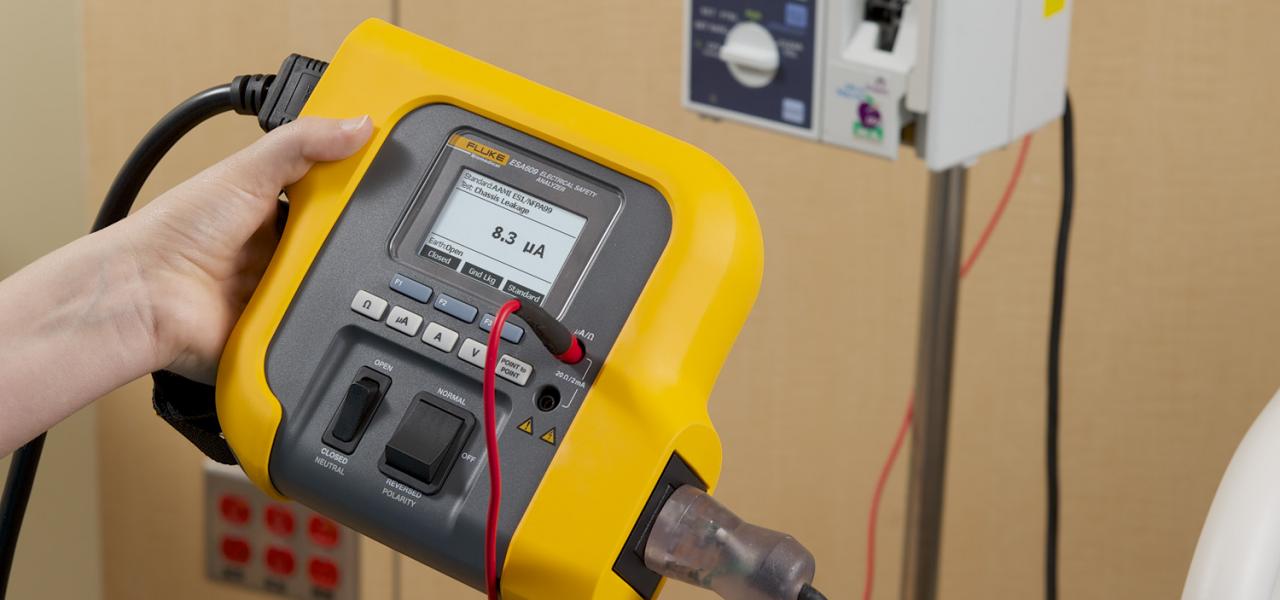
Electrical Safety: Why It's Important
Electro-Medical Devices are powered by the mains or an internal power source (batteries) and often attached to the patient by wires. Some of these devices have active parts inserted into the patient body and may come in direct contact with the heart. There is a risk to the patient in the event of current leaking from the device. Current can also be transmitted through a caregiver such as a nurse in contact with an electronic device near the patient. Electrical shock can cause disruptions during health care procedures and result in injury or death. This makes electrical safety a topic of very high importance in medical device quality assurance.
Physiological effects of electrical shock range from a tingling sensation to serious burns and electrocution. Excitable human tissue is very sensitive to current in the frequency range of electrical power systems worldwide (50 Hz to 60 Hz). Figure 1 shows the effects of current flowing from one skin contact point to another.

Electrical safety takes on added significance in electrically-susceptible patients. For cardiac procedures, electrically-conductive catheters may be placed into the heart while the patient is connected to medical equipment. This procedure puts patients at risk for ventricular fibrillation. Skin exhibits a high electrical resistance, but internal body components such as blood and muscle have a low electrical resistance. In fact, currents as low as 20 microamps have caused ventricular fibrillation in experiments conducted with dogs when a conductor made direct contact to the heart.
The term macroshock describes electrical current applied externally. On the other hand, the term microshock is used to describe direct shocks to the cardiac muscle. As a result of data collected regarding macroshock and microshock, worldwide standards have been established to limit leakage current.
In equipment designed for low resistance direct contact with patients, such as indwelling catheters, electrical isolation techniques are used to reduce the current flowing to the patient to minimal levels. In the event of a device failure or short-circuit condition, the patient is protected from microshock. These techniques may utilize isolation transformers and optical circuits. Thus, electrical safety standards specify low microampere limits for direct patient contact equipment. To reduce leakage current to negligible levels, chassis grounding is utilized to shunt any leakage or fault current to ground rather than to the patient or staff. Figure 2 demonstrates the hazard current from the electrical failure being safety shunted to ground through this alternative pathway. Effective grounding can only be achieved with very low resistance pathways to ground on the order of tenths of an ohm. Grounding is another measurement specified in electrical safety standards for medical devices.

Basic electrical safety tests include:
• Visual inspection of cables, plugs and connectors
• Measurement of ground wire resistance
• Measurement of chassis and patient lead/ contact isolation
Look for the next installment of Electrical Safety: Safety Standards and Testing
